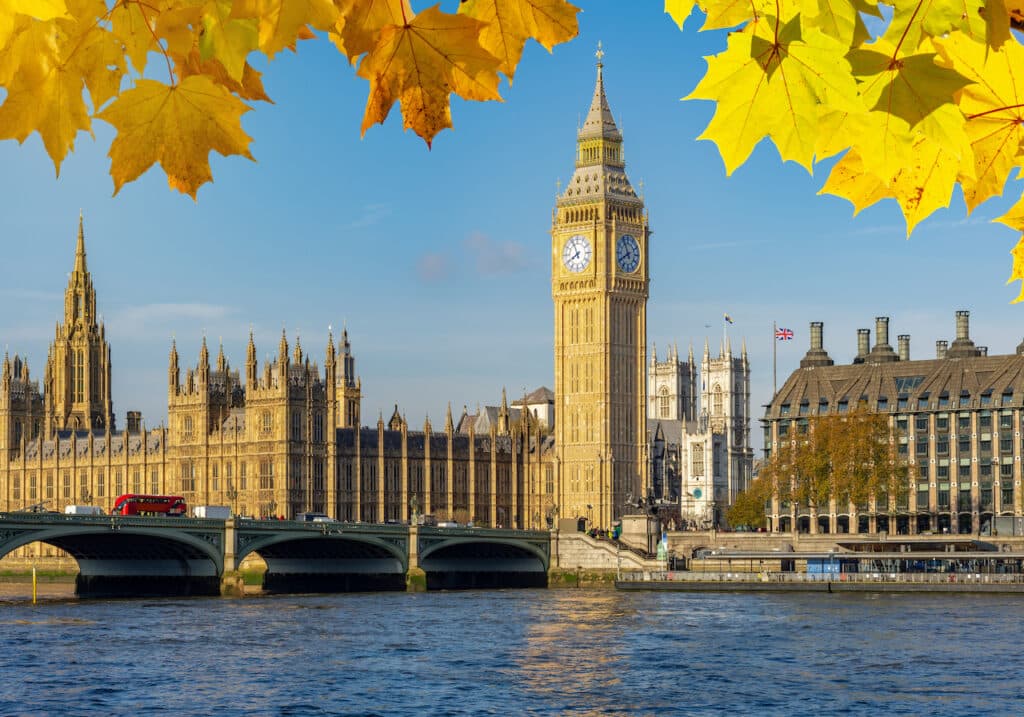Starting a business in Canada is entirely possible—even if you still fumble your loonies, haven’t memorized your postal code, and just learned that “incorporation” and “GST” are not, in fact, the same thing.
The good news? Canada is unusually welcoming to foreign entrepreneurs. Whether you’re a permanent resident or here on a business-friendly visa, you can launch a fully legal, fully operational company with access to funding, tax advantages, and government programs that don’t require an insider to decode.
The paperwork is manageable. The market is stable. And the process, while bureaucratic, is at least polite about it.
Here’s how to start strong. No fluff. No flag-waving. Just the facts—and a few smart moves that’ll save you time, money, and regret.
📋 Key Updates for 2025
- The CRA now defaults to online mail for most business communications, including notices and tax updates through My Business Account.
- As of June 2024, the capital gains inclusion rate for corporations has increased from 50% to 66.67%, impacting how business gains are taxed.
- A new Canada Entrepreneurs’ Incentive offers a lower 33.3% capital gains inclusion rate on up to $2 million from the sale of qualifying small business shares.
Can foreigners start a business in Canada?
Canada doesn’t require citizenship to start a business—but that doesn’t mean anyone can show up, file a form, and start issuing invoices. Your ability to launch a business depends entirely on your immigration status and where (and how) you plan to operate.
Here’s how it breaks down:
- Permanent residents can start and run a business without restriction. You’ll be treated like any Canadian entrepreneur when it comes to ownership, taxes, and liability.
- Work permit holders have to tread carefully. Most permits are tied to an employer, which can make launching your own business off-limits unless you’re on an open permit or get explicit approval.
- Temporary residents and visitors aren’t eligible to start businesses while living in Canada—unless they go through a designated program like the Start-Up Visa, which is built for high-growth, investor-backed ventures.
Living outside Canada but want to operate a Canadian business remotely? It’s possible—but most provinces require at least one Canadian-resident director on file. Two exceptions:
- British Columbia
- Ontario
Both allow 100% foreign ownership with no local director—making them the most accessible provinces for international founders setting up from abroad.
💡 Pro Tip:
Canada is open to foreign entrepreneurs—but only if your immigration status backs you up. The business plan can wait. Legal eligibility comes first.
Choosing the right business structure
Before you invoice a single client or expense your first coffee, you’ll need to choose a legal structure for your business. This isn’t just a checkbox—it affects how you’re taxed, how much liability you carry, and how easy it is to scale.
Here’s are the main types of business structures:
Sole proprietorship
The simplest structure. You are the business. You report income on your personal tax return, pay personal tax rates, and take home all the profit. It’s easy to set up—and just as easy to forget that you’re fully liable for everything.
Best for: Freelancers, contractors, early-stage side hustles.
Partnership
Like a sole proprietorship, but with more cooks in the kitchen. You share profits, losses, and liability with one or more partners. You’ll need a partnership agreement (unless you enjoy conflict), and each partner reports their share of income on their own tax return.
Best for: Small teams starting out together, family businesses, service providers splitting roles and revenue.
Corporation
A separate legal entity. You pay corporate tax on business income, and then pay personal tax on any salary or dividends you take out. More paperwork, more structure—but also more protection.
Best for: Businesses with growth plans, employees, or any situation where limiting liability is a priority.
If you’re incorporating, you’ll also need to decide between federal and provincial incorporation. Federal gives you name protection across Canada and is ideal if you plan to operate in multiple provinces.
Provincial incorporation (e.g., in Ontario or British Columbia) is often faster, cheaper, and perfectly sufficient if your business is staying local.
💡 Pro Tip:
There's no single right choice. It comes down to your goals, your risk tolerance, and how much structure (and paperwork) you’re willing to manage. Just don’t default to “easiest” if you're planning to grow. What saves time now could cost you later—in tax, cash flow, or legal risk.
Turning your business idea into a plan
Great ideas are easy. Viable businesses are not.
Before you register anything or start designing a logo, you’ll need to figure out whether your business actually works in a Canadian market—and that starts with real research, not gut instinct.
Step 1: Start with competitor analysis
Who’s already doing what you plan to do? What are they charging? Where are the gaps? If your type of business is already saturated in your province or city, you’ll need a sharper edge—or a better location.
Step 2: Know your audience
Market research doesn’t need to be expensive, but it does need to exist. Understand who your customers are, how they buy, and what they’re currently settling for.
Step 3: Build a Canadian-style business plan
That means pricing grounded in local benchmarks, expenses tied to actual provincial tax rates, and cash flow projections that account for seasonal swings (and, yes, possibly snowplows).
Step 4: Check your assumptions
Regulations and licensing vary by province—and so do startup costs, especially if you’re working in real estate, food services, or anything involving public safety. Align your plan with the actual rules on the ground, not what worked in another country.
💡 Pro Tip:
A solid plan doesn’t just help you stay compliant—it helps you get funding, stay cash-positive, and avoid becoming the cautionary tale someone else reads in a “What Not to Do” thread.
Funding your business: Loans, credit, and capital
Starting a business takes more than a great idea and a logo—it takes money. And unless you’re self-funding or sitting on a surprise inheritance, you’ll need to explore how Canadian financing actually works.
Canada offers a few core funding options:
- Small business loans from major banks and credit unions (but expect to show a business plan, some cash flow forecasts, and, ideally, a credit history).
- Government grants and subsidies, especially if your business supports innovation, job creation, or specific industries like tech or green energy.
- Venture capital or angel investment, available—but competitive—and typically geared toward high-growth start-ups with a solid pitch and a strong team.
For many newcomers and self-employed founders, early financing is less about outside investment and more about survival cash flow. A business credit card can help you cover startup expenses and separate personal from business spending—just don’t treat it like free money.
Financing doesn’t need to be perfect from day one. It just needs to be realistic. And managed.
💡 Pro Tip:
Buy business insurance. If you're taking on debt or operating in any sector where liability matters (so, most of them), lenders and landlords may require it—and you’ll sleep better knowing your business has a backstop if something goes sideways.
Registering your business in Canada
This is where your business becomes real—legally, financially, and bureaucratically.
First, you’ll need a business name that’s available, compliant, and unlikely to trigger a trademark dispute. If you’re incorporating federally, you’ll also need a NUANS report to confirm that no one else has already claimed (or nearly claimed) the name.
For stronger brand protection, consider filing a trademark with the Canadian Intellectual Property Office. It’s optional, but smart if your name, logo, or tagline matters.
The registration process depends on how you’ve structured your business:
- Sole proprietors and partnerships register with their province. It’s fast, inexpensive, and links directly to your personal tax return.
- Corporations can register provincially or federally. Federal incorporation gives you national name protection but requires extra steps (and fees) in each province you operate in. Provincial incorporation is often more practical if you’re staying local.
Once you’ve registered your business, you’ll need to:
- Get a business number from the Canada Revenue Agency (CRA)
- Open a corporate tax account (if incorporated)
- Register for GST/HST if your revenue exceeds $30,000—or sooner, if you want to claim input tax credits
It’s not glamorous. But get this part right, and you avoid the kind of paperwork that shows up when you least want it to.
💡 Pro Tip:
Already have an existing business incorporated in another province? You’ll need to register it as an extra-provincial corporation before operating somewhere new.
Licences, permits, and legal requirements
Registering your business isn’t the end of the red tape—it’s the beginning.
Depending on your industry and location, you may need one or more licences or permits to operate legally. And skipping this step isn’t just risky—it can shut you down before your first sale.
What you’ll need depends on:
- What you do: A self-employed graphic designer likely won’t need anything beyond registration and a tax number. A real estate brokerage, daycare, or café? Completely different story.
- Where you operate: Licensing is handled at the municipal, provincial, and federal levels, and requirements vary by province—and sometimes by city.
Some sector-specific examples:
- Food businesses need health inspections, food handling certifications, and in many cases, municipal business licences.
- Real estate professionals must register with the relevant provincial regulator and complete licensing exams.
- Education and childcare providers often require multiple layers of approval—including inspections, staffing ratios, and formal registration with education authorities.
To avoid guessing, use the Government of Canada’s Business Permit and Licence Finder, a tool that lets you search by location and business type to identify exactly what’s required before you launch.
This isn’t the fun part. But it’s what keeps your business legal, insurable, and fine-free. And that’s worth more than skipping a few forms.
Opening a business bank account and managing payments
Once your business is registered, you’ll need a proper bank account. Not your personal one. Not a PayPal workaround. A real, separate business account—because mixing your rent and your revenue is how audit nightmares are born.
To open a business account in Canada, you’ll typically need:
- Your business registration documents
- Your CRA business number
- Two pieces of ID
- Your articles of incorporation (if applicable)
- Proof of your business address
Once the account is open, you’ll also want to set up payment systems—especially if you plan to accept credit cards, e-transfers, or online payments. That means choosing the right merchant services provider, comparing transaction fees, and making sure your invoicing setup actually talks to your bank account.
💡 Pro Tip:
Separate your personal and business finances. Always. It keeps your bookkeeping clean, your taxes accurate, and your financial reporting something other than guesswork.
Taxes and the CRA: What you need to know
Starting a business in Canada means starting a relationship with the Canada Revenue Agency (CRA)—whether you’re self-employed, incorporated, or somewhere in between.
Here’s what you’re responsible for on the Canadian side:
- Filing your business tax return: Sole proprietors report business income on their personal return (T1). Corporations file separately using the T2 corporate return.
- Charging and collecting GST/HST: Once you earn $30,000 or more in gross revenue across four consecutive quarters, you’re required to register for GST/HST and start collecting sales tax. Registering early can help you claim input tax credits.
- Remitting payroll deductions: If you hire employees, you’ll need to register a payroll account with the CRA, withhold income tax, EI, and CPP, and remit those deductions regularly.
For incorporated businesses, you’ll pay corporate tax at the federal level (and possibly provincial), with rates varying based on income and whether you qualify for the small business deduction. As a sole proprietor, your profits are taxed at personal rates.
Now—if you’re a U.S. citizen living in Canada, things get more complicated.
You’re still required to:
- File a U.S. federal tax return (Form 1040) every year, regardless of where you live
- Report your Canadian business income to the IRS, even if you’re already paying tax in Canada
- File FBAR (FinCEN Form 114) if your total foreign bank account balances exceed $10,000 USD at any point during the year
- Possibly file Form 8938 (FATCA reporting) if your foreign financial assets exceed certain thresholds
- Track and report Canadian corporate holdings properly, especially if you own a Canadian corporation—this often triggers Form 5471, which is complex and penalty-prone if missed
Thankfully, the U.S.–Canada tax treaty and foreign tax credits can help prevent double taxation—but only if you file correctly and on time in both countries.
The takeaway: two countries, two tax systems, one business. If you’re a U.S. expat running a Canadian company, make sure your tax strategy is built for both.
Final steps for new business owners
Once your business is up and running, the real work begins—and it has less to do with logos and more to do with staying solvent.
This is the phase where you track what’s working (and what’s not), revisit your pricing, and adjust your cash flow strategy before the spreadsheet starts screaming. If your marketing isn’t landing or your projections were a little optimistic, now’s the time to course-correct.
Keep a close eye on:
- Revenue vs. expenses
- Invoicing delays and payment collection
- Which products or services are actually profitable
- Whether your pricing still makes sense in your market
You’ll also need to manage your first tax return—whether that’s a T1 (for sole proprietors) or a T2 (for corporations). CRA deadlines are non-negotiable, and late filings can mean penalties, interest, or extra scrutiny. Get familiar with your filing and remittance schedule early so you’re not learning the hard way.
And finally—don’t wait too long to bring in help. A bookkeeper, accountant, or tax advisor can help you stay compliant, get ahead of problems, and position your business to grow without burning you out in the process.
Starting a business in Canada is fully doable. Keeping it healthy takes a bit more planning, a few solid systems—and the occasional spreadsheet you actually look at.
Starting strong, scaling smart
Starting a business in Canada comes with forms, filings, and the occasional acronym you’ll pretend to understand (until you don’t). But it’s absolutely doable—even if you’re new to the country, new to self-employment, or still googling “what is GST.”
With the right structure, a bit of persistence, and a plan that covers both strategy and compliance, you can build something real here. Canada supports small business owners—including newcomers—but it won’t handle your U.S. tax obligations for you.
If you’re a U.S. expat running a business in Canada, Bright!Tax can make sure your IRS filings are handled—accurately, on time, and with zero extra stress on your end. Reach out to get started.
Frequently Asked Questions
-
Can I start a business in Canada if I’m not a Canadian citizen?
Yes. Permanent residents can start a business freely. Work permit holders may have limited options, and foreign nationals can incorporate in certain provinces (like Ontario or B.C.) even without Canadian residency.
-
Do I need a Canadian partner or co-founder to incorporate?
No. Several provinces—most notably Ontario and British Columbia—allow 100% foreign ownership with no Canadian-resident director.
-
What’s the difference between federal and provincial incorporation?
Federal incorporation protects your business name nationwide but requires extra steps in each province you operate. Provincial incorporation is faster and easier if you’re staying local.
-
What kind of taxes will my Canadian business have to pay?
You may owe corporate tax, personal income tax (if you’re a sole proprietor), GST/HST, and payroll taxes if you have employees. The Canada Revenue Agency (CRA) manages all of it.
-
Do I still need to file U.S. taxes if I run a business in Canada?
Yes. U.S. citizens must file annual tax returns with the IRS, even while living abroad. That includes reporting foreign income, business ownership, and financial accounts.
-
Will I be taxed twice—by both Canada and the U.S.?
Not if you file correctly. The U.S.–Canada tax treaty and foreign tax credits help avoid double taxation, but the forms and reporting rules are strict.
-
What forms do I need to file with the IRS as a U.S. expat business owner?
It depends on your structure, but common filings include Form 1040, FBAR (FinCEN 114), Form 8938, and possibly Form 5471 if you own a Canadian corporation.

 Connect on LinkedIn
Connect on LinkedIn

